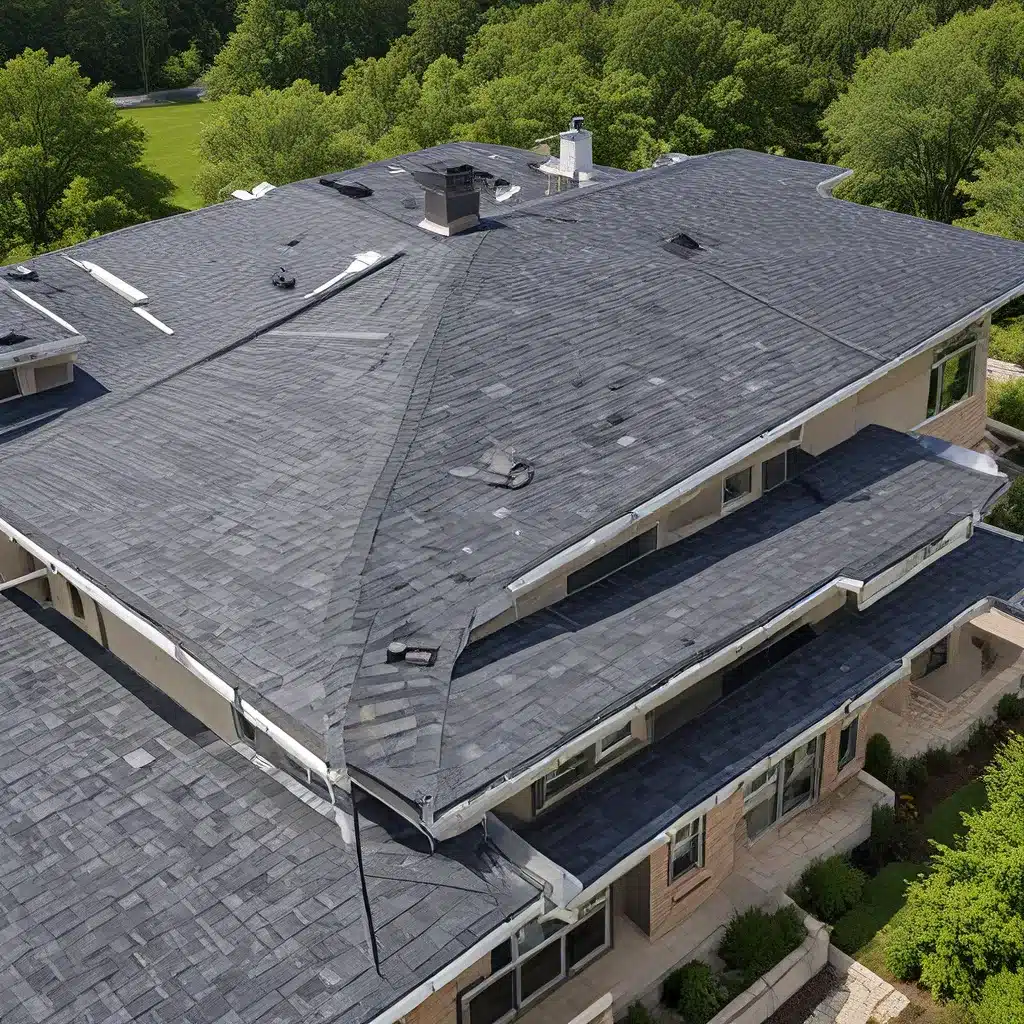
Rooting for a Greener Future: The Captivating World of Eco-Friendly Roofing
As I step out onto my balcony, I can’t help but marvel at the vibrant greenery that adorns the rooftops of the surrounding buildings. It’s like a verdant oasis, a striking contrast to the sea of gray and brown that once dominated the cityscape. I can’t help but wonder, what magic has transformed these once-barren roofs into flourishing urban gardens?
The answer, my friends, lies in the sustainable roofing strategies that are gradually redefining the way we think about our built environments. Gone are the days of uninspired, energy-guzzling roofs – today, we’re embracing a future where our rooftops are not just functional, but actively contribute to the health and well-being of our communities.
Unraveling the Secrets of Green Roofs
At the heart of this transformation are green roofs – living, breathing havens that are transforming the urban landscape one roof at a time. These remarkable systems, which feature a layer of vegetation growing atop a building’s roof, are not only visually stunning but also packed with practical benefits.
As I delve deeper into the world of green roofs, I’m struck by the sheer ingenuity of their design. These roofs are meticulously engineered to reduce heat island effects, a phenomenon where urban areas become significantly warmer than their surrounding rural counterparts. By providing a natural cooling layer, green roofs can lower surface and air temperatures by an astonishing 30-40°F, ultimately contributing to a more comfortable and livable urban environment.
But the benefits of green roofs don’t stop there. These verdant oases also reduce building energy use by up to 7%, leading to annual savings of $0.23 per square foot of the roof’s surface. Imagine the impact that could have on your utility bills – and on the planet as a whole.
Exploring the Diverse Landscape of Roofing Options
Of course, green roofs are not the only sustainable roofing solution out there. Another intriguing option is the cool roof, which is made of highly reflective and emissive materials that remain cooler than traditional roofs during peak temperatures. While cool roofs may not have the added benefits of green roofs, such as stormwater management and natural habitat creation, they still play a crucial role in combating the heat island effect.
As I ponder the various roofing options, I’m reminded of the insightful words of the experts at Holcim, a global leader in sustainable building solutions: “Green roofs are preferred when lifecycle costs, public benefits, and broader environmental impacts are of interest, while cool roofs are best suited for projects with limited budgets and a primary focus on energy savings.” It’s a nuanced and thoughtful perspective that highlights the importance of considering the unique needs and priorities of each project.
Weighing the Costs and Benefits of Sustainable Roofing
Of course, the decision to invest in a sustainable roofing solution is not one to be taken lightly. The initial costs of green roofs, for example, can be higher than those of conventional roofing materials. However, as the experts at the EPA point out, building owners can offset these costs through reduced energy bills, stormwater management fees, and the longer lifespan of green roofs compared to traditional roofs.
When I consider the broader environmental and social benefits of sustainable roofing, the investment seems more than worthwhile. Green roofs, for instance, can reduce and filter stormwater runoff, absorb pollutants and carbon dioxide, and even serve as recreational green spaces. These are the kinds of co-benefits that can have a lasting impact on the health and well-being of our communities.
Embracing the Future: Sustainable Roofing in Action
As I gaze out at the lush, verdant rooftops surrounding me, I can’t help but feel a sense of excitement about the future of sustainable roofing. Southern Roofing Company, a local roofing services provider, has been at the forefront of this movement, helping homeowners and businesses alike to elevate their energy efficiency and environmental impact.
Through their innovative solutions and unwavering commitment to sustainability, Southern Roofing Company is transforming the way we think about our built environments. Whether it’s installing a state-of-the-art green roof system or implementing a cool roof solution, they’re empowering their clients to make a tangible difference in their communities.
But the story doesn’t end there. As I delve deeper into the world of sustainable roofing, I discover ongoing research and evolving conclusions that suggest even more exciting possibilities on the horizon. Some experts believe that the benefits of these systems may be even more far-reaching than we currently understand, with the potential to influence everything from urban planning to public health.
Embracing the Uncertainty: The Future of Sustainable Roofing
Yet, with any emerging field, there is also an element of uncertainty. While the evidence for the positive impacts of sustainable roofing is compelling, there may still be areas of debate and ongoing exploration. Researchers continue to study the complex interplay between these systems, the built environment, and the natural world, seeking to uncover the full scope of their potential.
As I consider this, I’m reminded of the wise words of the experts at Holcim, who caution that “climate change and urbanization call for new solutions to maintain and improve the quality of life in our cities.” It’s a sentiment that resonates with me deeply, and one that underscores the vital importance of embracing the unknown and pursuing innovative approaches to the challenges we face.
As I step back inside, I can’t help but feel a renewed sense of hope and excitement for the future of sustainable roofing. The rooftops of our cities may hold the keys to a greener, more livable world – and I, for one, can’t wait to see what the future has in store.